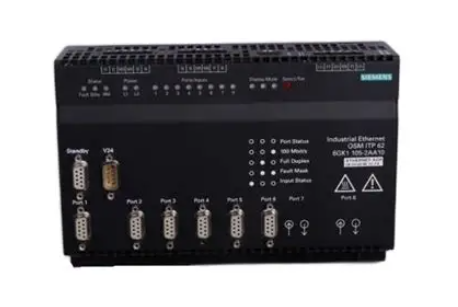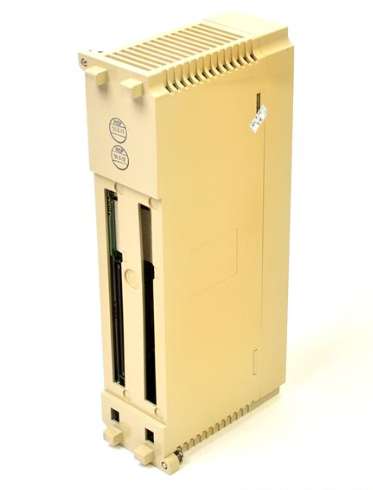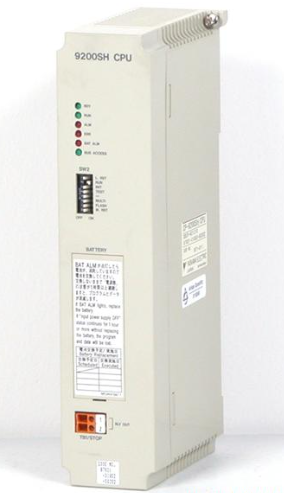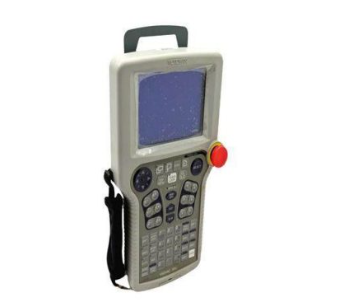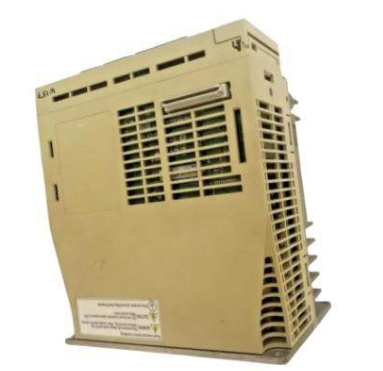AB Cat. No.1771-IVN DC (10-30V) Input Module
AB Cat. No.1771-IVN DC (10-30V) Input Module
Pre-Installation Notes:
Compatibility: This module is a source input and needs to be paired with a sinking current output for the B-Series 1771 I/O chassis,
and can be used with a variety of processors, such as PLC-2/20, PLC-3, etc., see the processor compatibility chart.
Cannot be installed in the same I/O chassis as the 1771-IX thermocouple module,
but can be used in a common chassis with the 1771-IXE thermocouple module.
Input Filtering: Modules are equipped with input filtering to reduce the effects of voltage transients caused by contact bounce and electrical noise,
as listed at the end of the document.
Installation Procedures:
Static protection: the module is sensitive to static electricity, before installation, you need to touch a grounded object to discharge static electricity,
avoid touching the backplane connectors, pins and internal circuit components, when not in use, placed in a static shielding bag.
Chassis keying: Use the plastic keying tape supplied with the I/O chassis and place the tape between 14 - 16
and 30 - 32 on the chassis backplane to ensure proper module installation.
Module Installation: Insert the module board against the top and bottom card rails of the chassis,
press firmly to make a tight connection to the backplane connector, and then swing the module locking latch down to secure it.
Wiring Connections: Connect the wiring through the 1771-WN field wiring arm, making sure to disconnect the power before wiring,
and paying attention to the polarity of the power supply to avoid damaging the module by reversing the wiring or connecting it to AC voltage.
Each module incorporates 2 complete modules (32 inputs) in each I/O chassis slot, see Module Input Terminal Assignment table for wiring correspondence.
Status Indicators: There are 32 status indicators on the front panel of the module, which correspond to the control status of the inputs and light up
when the corresponding inputs have voltage.
Module Specifications:
| Description | Values |
| Number of Inputs per Module | 32 | Module Location | 1771 | 1771 | 1771 | 1771 | 32
| Module Location | 1771-A1B to -A4B I/O Enclosures |
| | Input Voltage Range (+dc)| 10 - 30V dc|
| Input Voltage Range (+dc)|10 - 30V dc| Nominal Input Current | 4.5mA@(+dc - 10V dc)| Min.
| Minimum Off-State Current | 1.7mA @ (+dc - 5V dc)| | Nominal Input Current | 4.5mA @ (+dc - 10V dc)|
|Maximum Off-State Voltage |(+dc - 5V dc)|
Input Impedance |2.2K| Input Signal Delay |Low
| Input Signal Delay | Low to High Propagation: 6ms (±2ms); High to Low Propagation: 6ms (±2ms)| | Power Consumption | 15ms max.
| Power Consumption | 15.6W max; 1.5W min.
| Thermal Dissipation | 53.3 BTU/hr max; 5.1 BTU/hr min| | Backplane Current | 5.5 BTU/hr max; 5.1 BTU/hr min
| Backplane Current | 280mA at 5V dc max.
Isolation Voltage | 1500V ac RMS| | Wire Size | 14 gauge
| Conductor Gauge | 14 gauge stranded wire (max); 3/64 inch insulation (max); Category 1| | Environmental Conditions | Operating Temperature | 5V dc max; 5 BTU/hr min
| Environmental Conditions | Operating Temperature 0 - 60 ∘C (32 - 140 ∘ F); Storage Temperature - 40 - 85 ∘C (- 40 - 185 ∘ F); Relative Humidity 5 - 95% (non-condensing)|
| Keyed Positions | Between 14 - 16 and 30 - 32 | Field Wiring Arm | 1771-WN
| Field Wiring Arms | 1771-WN| Keyed Positions | Between 14 - 16 and 30 - 32
| Field Wiring Arm | 1771-WN| | Wiring Arm Screw Torque | 7 - 9 in-lb
Critical Issues:
Which module cannot be installed in the same I/O chassis as the 1771-IVN module?
Answer: The 1771-IVN module cannot be installed in the same I/O chassis as the 1771-IX thermocouple module.
What is the input signal delay for this module?
Answer: The input signal delay for this module is 6ms (±2ms) for low to high propagation and 6ms (±2ms) for high to low propagation.
What is the input voltage range of the 1771-IVN module?
Answer: The input voltage range for the 1771-IVN module is 10 - 30V dc.
Input Filter Characteristics
Functional role: Input filtering is mainly used to limit the impact of voltage transients caused by contact bounce and electrical noise on the module.
In industrial environments, the frequent starting and stopping of electrical equipment, motor operation, etc. may generate electrical noise,
while the contact bounce of mechanical contacts may also cause voltage fluctuations.
These disturbances, if left untreated, may cause the module to misinterpret the input signals, affecting the normal operation of the system.
1771-IVN module's input filtering feature effectively reduces these disturbances and ensures that the module accurately recognises the input signals.
Importance: This filtering feature is critical to the stable operation of the module.
It ensures that the module can accurately acquire input signals in complex electromagnetic environments, avoiding erroneous signals caused
by voltage transients, and thus guaranteeing the stable and reliable operation of the entire control system.
In factories with a large number of electrical equipment, all kinds of electrical noise are intertwined,
- EMERSON
- Honeywell
- CTI
- Rolls-Royce
- General Electric
- Woodward
- Yaskawa
- xYCOM
- Motorola
- Siemens
- Rockwell
- ABB
- B&R
- HIMA
- Construction site
- electricity
- Automobile market
- PLC
- DCS
- Motor drivers
- VSD
- Implications
- cement
- CO2
- CEM
- methane
- Artificial intelligence
- Titanic
- Solar energy
- Hydrogen fuel cell
- Hydrogen and fuel cells
- Hydrogen and oxygen fuel cells
- tyre
- Chemical fiber
- dynamo
- corpuscle
- Pulp and paper
- printing
- fossil
- FANUC
- Food and beverage
- Life science
- Sewage treatment
- Personal care
- electricity
- boats
- infrastructure
- Automobile industry
- metallurgy
- Nuclear power generation
- Geothermal power generation
- Water and wastewater
- Infrastructure construction
- Mine hazard
- steel
- papermaking
- Natural gas industry
- Infrastructure construction
- Power and energy
- Rubber and plastic
- Renewable energy
- pharmacy
- mining
- Plastic industry
- Schneider
- Kongsberg
- NI
- Wind energy
- International petroleum
- International new energy network
- gas
- WATLOW
- ProSoft
- SEW
- wind
- ADVANCED
- Reliance
- YOKOGAWA
- TRICONEX
- FOXBORO
- METSO
- MAN
- Advantest
- ADVANCED
- ALSTOM
- Control Wave
- AB
- AMAT
- STUDER
- KONGSBERG
- MOTOROLA
- DANAHER MOTION
- Bently
- Galil
- EATON
- MOLEX
- Triconex
- DEIF
- B&W
- ZYGO
- Aerotech
- DANFOSS
- KOLLMORGEN
- Beijer
- Endress+Hauser
- MOOG
- KB
- Moxa
- Rexroth
- YAMAHA
- Johnson
- Westinghouse
- WAGO
- TOSHIBA
- TEKTRONIX
- BENDER
- BMCM
- SMC


Email:wang@kongjiangauto.com

